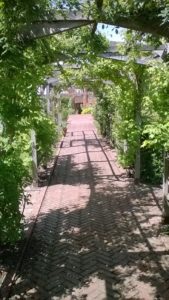“We’re off to see some barns.”
“What?”
“We’re off to see some barns.”
“That’s what I thought you said.”
“It’ll be interesting.”
“Yeah, right.”
I turned over and went back to sleep.
On waking, I had some weird recollection of a conversation about barns, though I may have been dreaming and put the thought away.
“We’re off to see some barns” said my wife again over breakfast.
“Barns?” I retorted, “I thought that was a bad dream”.
It was, however, the reality (who am I to argue?) and we were soon tootling around the Essex countryside looking out for the tourist brown signs for Cressing Temple Barns.
King Stephen’s wife, Matilda Boulogne, founded the manor of Cressing in 1137 and granted the land to the Knights Templar. This was a Catholic military organisation which was founded in 1119 and recognised by Rome in 1139.
They became the foremost charity in the Christian world and created financial empires. The organisation came to own many properties and much land in England.
In 1206AD they built the mightily impressive and now Grade 1 listed, Barley Barn at Cressing. Built without all the advantages of modern engineering and design, it is said to be the oldest timber framed barn in the world. It is cathedral-like in dimensions.
The nearby Wheat Barn was subsequently built in 1280 AD and one can only marvel at the huge timbers above your head. Modern stairs and a platform gives closer access at one end of the barn to the intricacies of the joints which keep it all in place.
Not a metal nail or brace in sight.
Next to the Wheat Barn stands the Tudor walled garden, which was created between 1550 and 1600. Nowadays the gardens contain only the herbs, shrubs and flowers that it would have contained in that period, some of them quite rare.
They are laid out in a ‘gardens within a garden’ theme.
The scents wafting on the summer breeze were delicate and refreshing.
The Arbour is a walkway covered with climbing plants including hops and eglantine roses. It is made from green unseasoned oak with chestnut trellis and is inspired by Shakespeare’s A Midsummer Night’s Dream –
‘I know a bank where the wild thyme blows,
where oxslips and nodding violet grows,
quite over canopied with luscious woodbine,
with sweet musk roses and eglantine.
Musk roses grow against the wall of the Flowery Mead (meadow) as do oxslips, thyme and violets. A walk back in thyme! This is such a delightful place in which to sit and absorb the sights, sounds and scents of the gardens, as yours cares melt away.
Further buildings were added in the early part of the 17th century, including a farmhouse, and Granary – beware of the house martins which fly in and out of the entrance door just above your head.
A well house was constructed in 1920 to cover a deep, brick-lined well, originally dug out by the Knights Templar and you can still peer down into it’s depths.
After visiting the site, there is a modern visitor centre barn which houses a Wilkin Café and shop, one of ten around Essex. Another cream tea beckoned. (See my earlier review – Wilkin Café and Museum, about the original farm in Tiptree).
Well, I had visited the barns and found them to be a fascinating and interesting day out, so much better than I had midsummer night’s dreamed about.
A barnstorming day out indeed.
“Told you so” said my wife.
Don’t you just hate it when she is right again?
Entry to the grounds and barns are free, as is car parking, unless there is a specific event on within the grounds. Check this at www.visitparks.co.uk/places/cressing-temple.
Your sat-nav will find Cressing Temple Barns at CM77 8PD, off the B1018.








